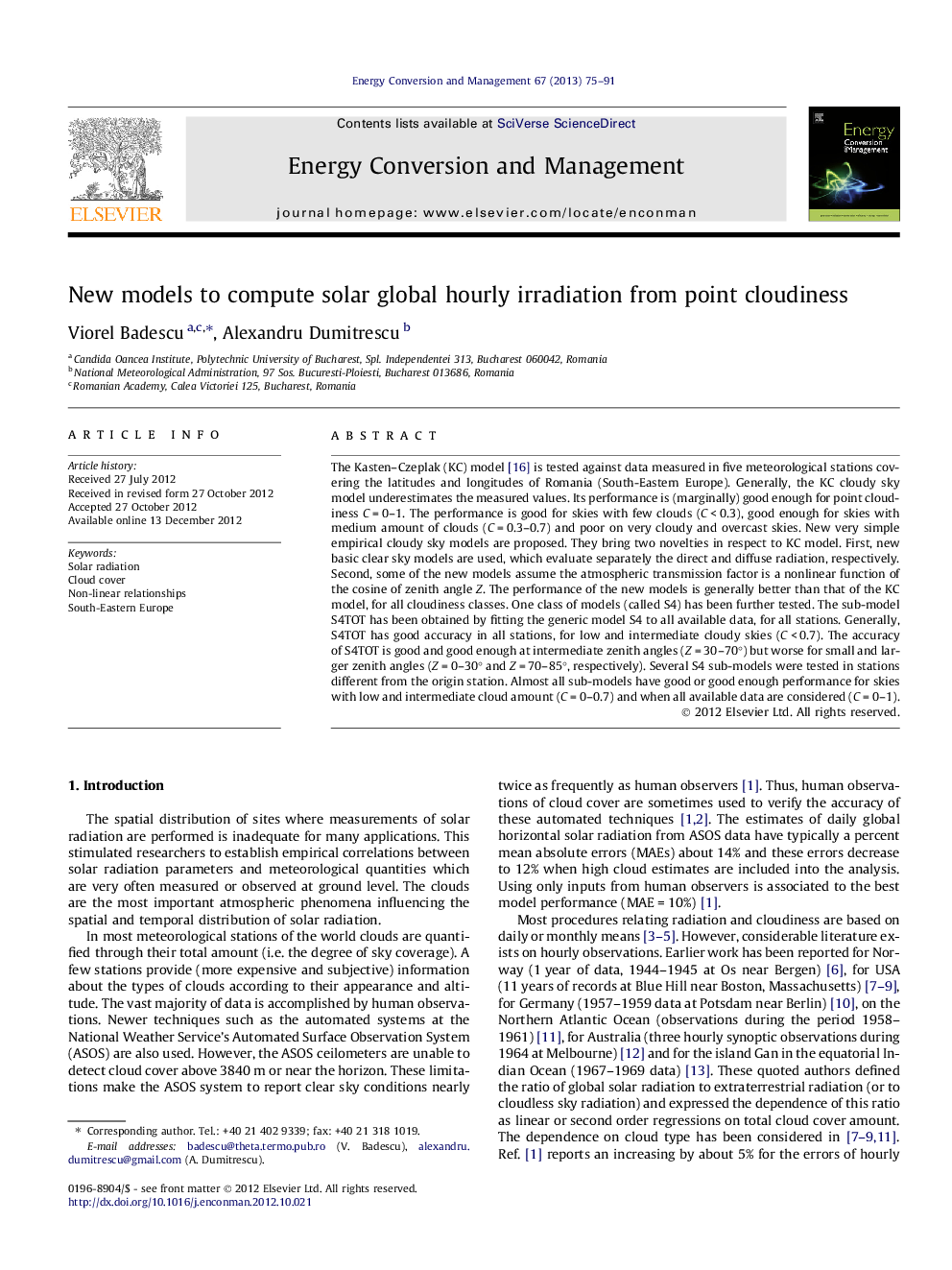| کد مقاله | کد نشریه | سال انتشار | مقاله انگلیسی | نسخه تمام متن |
|---|---|---|---|---|
| 765719 | 1462895 | 2013 | 17 صفحه PDF | دانلود رایگان |

The Kasten–Czeplak (KC) model [16] is tested against data measured in five meteorological stations covering the latitudes and longitudes of Romania (South-Eastern Europe). Generally, the KC cloudy sky model underestimates the measured values. Its performance is (marginally) good enough for point cloudiness C = 0–1. The performance is good for skies with few clouds (C < 0.3), good enough for skies with medium amount of clouds (C = 0.3–0.7) and poor on very cloudy and overcast skies. New very simple empirical cloudy sky models are proposed. They bring two novelties in respect to KC model. First, new basic clear sky models are used, which evaluate separately the direct and diffuse radiation, respectively. Second, some of the new models assume the atmospheric transmission factor is a nonlinear function of the cosine of zenith angle Z. The performance of the new models is generally better than that of the KC model, for all cloudiness classes. One class of models (called S4) has been further tested. The sub-model S4TOT has been obtained by fitting the generic model S4 to all available data, for all stations. Generally, S4TOT has good accuracy in all stations, for low and intermediate cloudy skies (C < 0.7). The accuracy of S4TOT is good and good enough at intermediate zenith angles (Z = 30–70°) but worse for small and larger zenith angles (Z = 0–30° and Z = 70–85°, respectively). Several S4 sub-models were tested in stations different from the origin station. Almost all sub-models have good or good enough performance for skies with low and intermediate cloud amount (C = 0–0.7) and when all available data are considered (C = 0–1).
► Kasten–Czeplak cloudy sky model is tested under the climate of South-Eastern Europe.
► Very simple cloudy sky models based on atmospheric transmission factors.
► Transmission factors are nonlinear functions of the cosine of zenith angle.
► New models’ performance is good for low and intermediate cloudy skies.
► Models show good performance when applied in stations other than the origin station.
Journal: Energy Conversion and Management - Volume 67, March 2013, Pages 75–91